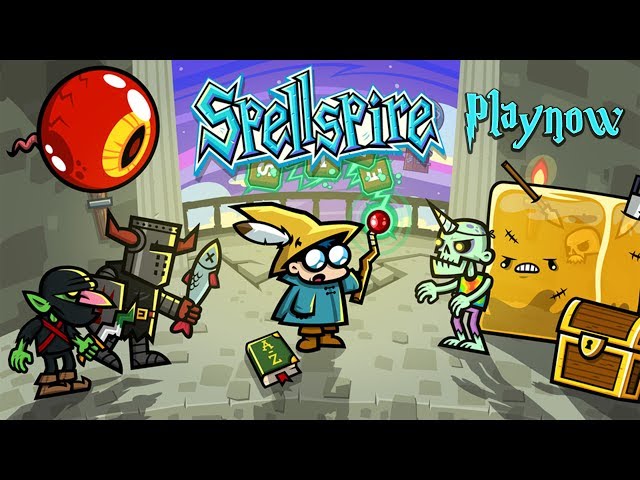There’s an undeniable magic that happens when digital worlds embrace the past. In the realm of video games, where futuristic hypercars and reality-bending vehicles are possible, a powerful and enduring love affair persists with vintage automobiles. From the rumbling V8s of 1960s American muscle to the elegant curves of pre-war European roadsters, these digital relics offer more than just transportation; they are time machines, cultural artifacts, and symbols of a bygone era of automotive design. This deep-seated affection isn’t just about nostalgia; it’s a complex appreciation for history, aesthetics, raw mechanical feedback, and the sheer joy of taming a beast from a different time.
Games like the Forza Horizon series, Grand Theft Auto, and Mafia have become interactive museums, preserving automotive heritage for a new generation. They allow players to experience, own, and customize cars they could only dream of, offering a tangible connection to a history defined by steel, chrome, and unfiltered horsepower. This article delves into the multifaceted reasons why gamers are so captivated by vintage cars, exploring the psychological appeal, the incredible technical craftsmanship required to recreate them, and their vital role in gameplay and world-building.
The Psychology of Digital Nostalgia and Automotive Preservation
The appeal of vintage cars in gaming is deeply rooted in human psychology. It taps into a powerful sense of nostalgia, not just for the cars themselves, but for the eras they represent. Driving a classic car through a game’s world is an immersive historical experience, allowing players to connect with the sights, sounds, and feelings of the past.
An Interactive Museum on Wheels
For many, classic cars are inaccessible. They are expensive to buy, difficult to maintain, and often relegated to museums or private collections. Video games democratize this experience. They act as living museums where these automotive legends are not just static displays but are meant to be driven, pushed to their limits, and even crashed without consequence. A player can meticulously restore a 1970 Dodge Challenger R/T in Forza Motorsport, learning about its engine components and historical significance, and then immediately experience its raw power on a racetrack. This interactive preservation is a powerful educational and entertainment tool, fostering a genuine appreciation for automotive engineering and design history.
The Fantasy of Ownership and Identity
Vintage cars are potent symbols of style, freedom, and individuality. In games, they become an extension of the player’s identity. Choosing a classic car over a modern supercar is a statement. It might signify an appreciation for raw mechanics over electronic aids, or a love for timeless design over aggressive aerodynamics. Games like Grand Theft Auto Online allow players to build entire garages dedicated to specific eras, creating a personal collection that reflects their taste. This fantasy of ownership, free from the financial and logistical burdens of reality, is a core part of the appeal.
The Digital Craftsman: Recreating Automotive Legends
Bringing a vintage car to life in a video game is an extraordinary feat of technical artistry and meticulous research. It involves a multi-disciplinary team of artists, engineers, and sound designers working in concert to capture the soul of the machine. This process is fraught with technical challenges, requiring sophisticated development practices and a deep understanding of various **Debugging Techniques** to achieve authenticity.
The Challenge of Authenticity: A Developer’s Perspective
Recreating a classic car isn’t just about getting the shape right; it’s about capturing its unique character—the way the chassis flexes, the engine sputters when cold, the distinct whine of the transmission. This requires a level of detail that pushes the boundaries of **Software Debugging** and simulation. Developers often start with laser scans of the real vehicle to ensure model accuracy down to the millimeter.
The physics engine is where the magic truly happens. Simulating the behavior of a 1960s leaf-spring suspension is vastly different from modeling a modern active suspension system. This involves intense **Code Debugging** and constant iteration. A small error in the code can make a car feel weightless or uncontrollably stiff. The entire process can be seen as a form of **Full Stack Debugging**, from the **Frontend Debugging** of the visual shaders on the car’s paint to the **Backend Debugging** of the complex physics calculations running on the game engine. For games with online multiplayer, ensuring these physics are synchronized across players involves complex **Network Debugging** to prevent cars from jittering or behaving erratically.
From Blueprints to Polygons: The Technical Pipeline
The development pipeline for a single vehicle is a microcosm of modern software development. Game studios often employ custom tools, sometimes scripted in languages like Python, making **Python Debugging** a crucial skill for the tools and asset teams. When a bug appears—say, a texture doesn’t load correctly—developers use a range of **Debug Tools** to trace the issue. This might involve stepping through code line-by-line, analyzing **Stack Traces** from **Error Messages**, or using advanced **Memory Debugging** to find memory leaks that could crash the game.
Even web technologies play a role. Many games use HTML-based UIs for menus or garage interfaces, meaning that skills in **JavaScript Debugging** and using tools like **Chrome DevTools** for **Browser Debugging** are surprisingly relevant. This is a clear example of **Web Debugging** principles being applied within the context of **Application Debugging**. The integration of these disparate systems often leads to complex challenges, where **Integration Debugging** becomes key to ensuring all parts work together harmoniously. The overall goal is to streamline this process through **Debug Automation** within a CI/CD pipeline, allowing for robust **Testing and Debugging** before the car ever reaches the player.
Gameplay and Design: The Role of Vintage Cars
Beyond their aesthetic and nostalgic appeal, vintage cars serve a critical function in gameplay and narrative design. They offer a driving experience that is fundamentally different from their modern counterparts, and they are essential tools for building immersive and believable worlds.
A Raw and Unfiltered Driving Experience
Modern cars are often packed with driver aids like traction control, anti-lock brakes (ABS), and stability management. Vintage cars, for the most part, are not. This absence of electronic nannies provides a raw, challenging, and ultimately more rewarding driving experience. Taming a high-horsepower muscle car in a game like Assetto Corsa requires skill and finesse. Players must learn to manage wheelspin, feather the throttle, and feel the car’s limits through the force feedback of their wheel. This mechanical purity creates a high skill ceiling and a profound sense of accomplishment when mastered.
The beauty of a classic car in a game is its imperfection. It’s a dialogue between you and the machine, a constant negotiation for control that modern cars often automate away.
Narrative and World-Building
Automobiles are powerful storytelling devices. The cars that populate a game’s world instantly establish its time period, tone, and cultural identity. The finned land yachts of the 1950s in Mafia II are as crucial to its atmosphere as the architecture and music. Similarly, the 80s-era sports cars in GTA: Vice City, inspired by shows like Miami Vice, are central to its sun-drenched, neon-soaked identity. Developers use cars to tell a story about the world and the characters within it. Finding a rusty, forgotten “barn find” in Forza Horizon isn’t just about acquiring a new car; it’s a moment of discovery and history, a mini-narrative in itself.
Community, Culture, and the Future
The love for vintage cars in games has spawned vibrant and creative communities. These digital spaces have become hubs for enthusiasts to share their passion, extending the experience far beyond the game itself.
Virtual Car Culture
Players now organize virtual car meets, cruises, and photoshoots, mirroring real-world car culture. Using powerful in-game photo modes, they become digital photographers, capturing stunning images of their favorite classic cars against beautiful backdrops. These communities, active on platforms like Reddit, Discord, and Instagram, are a testament to the deep appreciation players have for these digital machines. They share tuning setups, debate historical accuracy, and celebrate the art of automotive design together.
The Future of Digital Classics
As technology evolves, the experience of driving vintage cars in games will only become more immersive. Advancements in ray tracing will render chrome, paint, and leather with photorealistic accuracy. More sophisticated physics simulations will better replicate the nuances of older automotive technology. Virtual reality will place players directly in the driver’s seat, allowing them to reach out and touch the detailed interiors of these historic vehicles.
However, this increasing complexity presents new challenges for developers. Achieving high performance will require advanced **Debug Performance** strategies and the use of **Profiling Tools** to optimize code. Effective **Logging and Debugging** systems will be essential for managing these complex projects, especially in the context of **Production Debugging**, where issues must be resolved quickly after a game’s release. Whether it’s **React Debugging** for a game’s UI or **Kubernetes Debugging** for its online server infrastructure, the principles of meticulous **Error Tracking** and **Bug Fixing** will remain paramount.
Conclusion
The love for vintage cars in gaming is a rich and enduring phenomenon. It is a fusion of nostalgia for the past and excitement for the future of interactive technology. These digital classics are more than just pixels and polygons; they are carefully crafted experiences that serve as interactive museums, tools for self-expression, and the stars of compelling gameplay challenges. They connect us to a history of design and engineering, allowing us to experience the raw, untamed spirit of a different era. As developers continue to hone their craft with ever-more-powerful **Developer Tools** and techniques, the digital lives of these beloved machines will only become more vibrant, ensuring that the roar of a classic V8 will echo in virtual worlds for many years to come.













